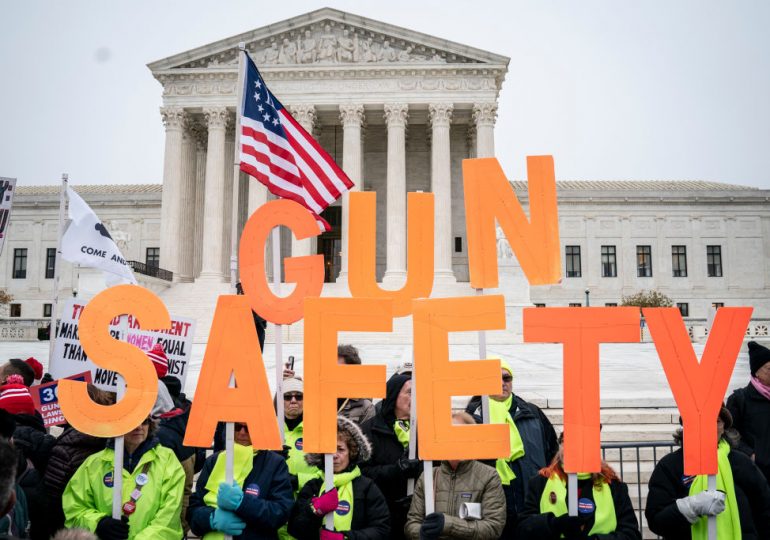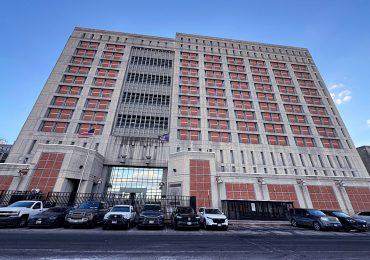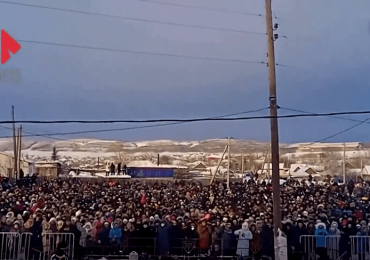On Nov. 7, the Supreme Court will debate whether a drug dealer in Texas with a history of armed violence is entitled to own a gun under the Second Amendment. United States v. Rahimi is the latest in a series of cases that have transformed the legalities of gun ownership in America. Beginning with District of Columbia v. Heller in 2008, the Court has interpreted a phrase long-understood as protecting the state militias as conferring a personal right to own a gun. It was, wrote Justice Paul Stevens in a blistering dissent, “a dramatic upheaval in the law.”
[time-brightcove not-tgx=”true”]
But Heller was just the start. The Court has since struck down handgun regulations in Chicago and New York, dismissing public health considerations as secondary and ultimately irrelevant to an untouchable constitutional right. As we await another case built on that premise, now is the time to ask: Is the Court restoring American liberties or tearing them up?
Read more: Supreme Court to Decide Whether Some Domestic Abusers Can Have Guns
The current Court’s interpretation of the Second Amendment is incompatible with the republican philosophy that underpinned the Constitution and animated the Founders’ thinking. Such a right risked allowing an individual the right to tyranny over one’s fellow Americans—similar to the absolute right a monarch had over his people, and thus the very thing the Founders wanted to prevent.
When the states debated the Constitution in 1787, they produced a storm of erudition covering every icon and anxiety of the republican mind. Whether the proposed government would deprive individuals of their gun rights was not among them.
The impetus for the Second Amendment was the fear that state militias would drift into redundancy under a powerful national government—a government authorized both to raise professional armies and to arm the state militias. Under this arrangement, it was feared, the militias could either be absorbed into one, European-style “standing army,” or left to crumble while professional soldiers were recruited to do the work of national security.
Read More: States Are Banning Assault Weapons. Courts Could Stop Them
That’s precisely what the Founders dreaded—the emergence of a permanent or “standing” army — and they saw surrendering control of the local militias as a fatal step in that direction. Nobody could be certain how these powers would play out, but the Second Amendment was James Madison’s promise that Congress could never disarm the state militias. The wording was prosaic and unhurried, as if everybody knew what was at stake: “A well regulated Militia, being necessary to the security of a free State, the right of the people to keep and bear Arms, shall not be infringed.” This was military language marshaled to a military cause.
It was not just that the Founders said nothing about arming the individual: they couldn’t have done so without betraying their political creed. They feared the tyranny of the individual as profoundly as the tyranny of kings, and their faith in a well-regulated militia was their answer to both dangers. It was no good having the power to raise armies and navies, warned several writers, if you fell into chaos and anarchy at home.
Keeping the peace was the first duty of government, and a well-regulated militia was the appointed means—no small matter, in an age before professional police forces. It was the work of the militias, wrote one of the most eloquent advocates of the Second Amendment, “to provide for the protection and defense of the citizen against the hand of private violence, and the wrongs done or attempted by individuals to each other.” To compromise the militias was to threaten liberty at its most basic level: it was to leave the weak at the mercy of the strong.
When the Founders spoke of the right of “the people” to keep and bear arms, in other words, they were not trying to arm individuals. They were trying to secure the community against the armed individual: the hand of private violence. This idea was, in fact, the founding principle of the liberal state. The very “idea of government,” wrote Alexander Hamilton, was to substitute “the mild influence” of the law for “the violent and sanguinary agency of the sword.” Its original purpose, wrote the philosopher John Locke, was “to restrain the partiality and violence of men.” This was a government designed for “men,” not “angels,” in Madison’s classic formulation.
Left to themselves, observed Locke in his hugely influential Treatises of Government, men would quarrel. They were slaves to their passions and prisoners of pride. Even the most rational and intelligent people could sink “to a Brutality below the level of Beasts” when their honor was on the table. True freedom began when they agreed to trim their sails, sheath their swords, and “resign” their natural proclivity for vengeance to the sober “umpirage” of the community. Only that would provide a sanctuary from the dark moods and “sudden thoughts” of one’s neighbors.
The secret, Locke explained, was collaboration and consent. The forces that were wild and free in the “state of nature” now served the common good. And the vehicle for that was the militia. It channeled the strength that a man once exerted as he saw fit “to assist the executive power of the society, as the law thereof shall require.” Every able-bodied man joined the militia as part of this social contract—people enjoyed the benefits of living in a community, and paid their way through militia service.
The right to keep and bear arms, then, was the antithesis of the modern concept of an individual entitlement. The right enshrined by the Second Amendment was the right of the states to provide protection against domestic and foreign violence for all members of the community. It had nothing to do with individual gun rights — except to protect people from those who would claim such prerogatives. And for most of America’s history, this precept was well understood. Only in the South, where slavery created its own species of common law, was there any sort of challenge to this collective and military interpretation of the right to bear arms.
But even there, where firearms were much more prevalent than in the North, the carriage of weapons was regulated and often prohibited by law. With the exception of a notorious 1846 case in Georgia, courts vigorously upheld these laws, appealing to both the letter and spirit of the Constitution.
Read More: The Supreme Court Just Expanded Gun Rights. Here’s What That Means
Republics, advised a famous ruling in Arkansas in 1842, did not vote for “anarchy.” To suggest that, in providing for a well-regulated militia, the Founders were condemning their descendants to cower under a reign of unregulated firepower, was to trade in absurdity. To deprive the legislature of the power to control firearms, argued the judge, would frustrate the end and aspiration of government: “peace and domestic tranquility.” It would condemn everyone to the perils that made government necessary in the first place. It was unthinkable that the architects of the Constitution would have authorized “a principle pregnant with such dangers.”
The Georgia Supreme Court struck a similar note of incredulity in an 1874 opinion. To have included an individual right to deadly weapons in the Constitution, declared the judge, the Founders would have had to believe “that their whole scheme of law and order, and government and protection, would be a failure.” Because that was where citizens armed with revolvers—these “inventions of modern savagery”—would take America.
The point was made even more sharply in Texas, where gun toting Confederate veterans unleashed a wave of terror in the decade after the Civil War. The world had seen too much blood shed in “the name of natural or personal liberty,” declared the state Supreme Court in 1872. This wild and dangerous freedom, explained the judge, was “exchanged under the social compact of States, for civil liberty”—a very different animal.
Prohibitions against lethal weapons, therefore, were the soul of freedom and essential to democracy. The alternative was a state of war. “We must not,” warned the judge, “go back to that state of barbarism in which each claims the right to administer the law in his own case; that law being simply the domination of the strong and the violent over the weak and submissive.”
It is therefore unfortunate that, in building its case for individual gun rights, the Supreme Court has leaned on the one exception to this pattern of condemnation—the infamous 1846 Georgia decision in Nunn v. State. The Nunn opinion stood alone in divorcing the right to bear arms from the duty of serving in the militia, and it was crafted by a notorious white supremacist for the purpose of controlling slaves.
By relying on this exception, the justices have distorted the Second Amendment and created the very thing that would have scared the Founders: a populace heavily armed for reasons other than military service. They’ve turned the American political creed on its head and threatened the very liberty that the Founders tried to safeguard. “Remember, all men would be tyrants if they could,” wrote Abigail Adams in 1776. That is no less true today.
Dominic Erdozain is a visiting professor at Emory University and the author of One Nation Under Guns. Follow him @domerdozain on X.
Made by History takes readers beyond the headlines with articles written and edited by professional historians. Learn more about Made by History at TIME here.
Leave a comment
















